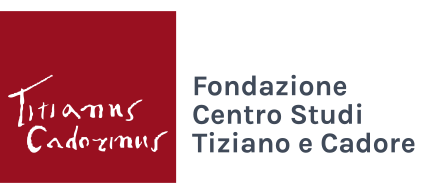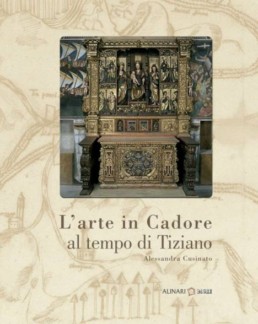L’arte in Cadore al tempo di Tiziano
Free delivery in Italy, payment on delivery abroad
L’arte in Cadore al tempo di Tiziano is the result of Alessandra Cusinato’s meticulous research, which on this occasion was guided by Bernard Aikema’s innovative vision. The book shows how Cadore was not the “land of delay” as has generally been assumed, but rather how it acted as a hinge between different cultural areas. It is, therefore, a comprehensive study, not just an artistic one, that considers anthropological and sociological issues. Cadore is revealed as a land of exchange and experience without boundaries through the analysis of artistic works in its territory stretching from Selva to Comelico and including Cortina. It is a far-reaching work that starts with the sources, language and traditions of small and varied local situations and goes on to compare them with Venetian, German and Friulian models. The precise aim is to re-insert the world of Cadore’s artistic production into the vast framework of which it was once part. This an important aspect has previously been completely neglected by scholars and is here finally placed under just consideration.
The study focuses on various artistic genres present in Cadore in Titian’s times, considering them in relation to their historic, financial, social and religious framework. The first part of the study is dedicated to the “central-peripheral” area and to the work of the architect Roupel, which is broadly discussed in two chapters. One chapter considers wooden sculpture – in particular Michael Parth’s work in Cadore – placing it within three spheres: the artistic ties and exchange between Cadore, Pusteria, Tyrol, Carnia and Friuli; the reasons behind a Cadore order of Nordic sculptures for a religious purpose; and to what extent Michael Parth’s works commissioned in Cadore reflect its taste and culture. Because of its historic-sociological emphasis, the study is able to place the works of art within the greater cultural, religious and linguistic sphere of Cadorean society at the time.
The third part of the study analyses pictures according to the “Gothic – Renaissance” model. It first looks at artisan workshops of a late Gothic kind for iconographic and stylistic clues. These are compared to Renaissance works, in which the use of one or more models denotes the artist’s new position and reflects the literary and artistic debate on the theme of imitation. In studying examples drawn from works by Gianfrancesco da Tolmezzo, Antonio Rosso and Francesco and Cesare Vecellio, this chapter intertwines the financial and commercial changes with the social and cultural changes of the sixteenth century. These changes resulted in the area’s aperture towards the Veneto region. However, the artistic changes in Cadore that placed it within the mainstream of the Veneto came a full century after the political changes.

